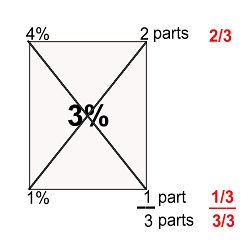Leon
Organic or not?
Hi, Milk Fans
Seems that some guys are trying to pass some milk for organic – and they want us to trust them. You are hurting us all – stop that!
Read more:
http://www.madison.com/tct/business/index.php?ntid=82973&ntpid=0
Kind regards,
Leon the Milkman
How bad is hydrated lime on your skin?
Hi, Milk Fans
It’s bad, it’s bad, it’s very,very bad.
Hydrated lime or Calcium Hydroxide reacts very fast with moisture and will even react with the moisture in your skin, so cover up hand and eyes.
However, once the reaction between the milk and the lime is completed and the milkpaint is dry, everything is safe again.
Regards,
Leon the Milkman
P.S. Here is a very informative link about lime:
Sampling from a milktank
Hi, Milk Scientists
When doing sampling from a milk tank to determine milk composotion, it is important that you sample from either the top or the bottom every time, even if you think that the milk was stirred enough – be consistent.
Also be aware that a round tank will probably only need 5 minutes of stirring, but a long/rectangular tank will need 10 minutes, because the milk do not build up momentum in those tanks.
Regards,
Leon the Milkman
Check this out:
Mastitis
Hi, Milk People
Mastitis occurs when harmful bacteria enter the cow’s udder through the teat canal. Usually only one or two quarters are infected(cow has four quarters/parts to her udder).
Mastitis lowers milk production and the cow can become ill and die from it.
Cows get infected by other cows, the environment, like manure, soil and water.
Mastitis can be controlled by cleaning the udder before and after milking, by cleaning the equipment, by feeding the cows well and treating sick cows before things get out of hand.
Â
Kind regards,
Leon the Milkman
Long Weekend
Disadvantage Milk Paint
Hi, Milkfans
The only disadvantage I can think of is that the milk paint is a denatured protein stain and therefore will not be removed by normal solvents and even water-based solvents.
So no stripping – but you can paint it over. Not a problem when you paint the kids’ building blocks, because you won’t want to change their colour too often 😉
Kind regards,
Leon the Milkman
Grazing Dairies Are Making More Money
Hi, Dairy Farmers
When it comes to household income, farming background and technology use, dairy farmers who use managed grazing aren’t all that different from farmers who operate more traditional dairy enterprises. In fact, they tend to be more profitable. That’s according to a new report from the UW-Madison Center for Integrated Agricultural Systems and Program on Agricultural Technology Studies. The groups compared production systems, technology, labor, performance and satisfaction with quality of life on grazing dairy farms and more conventional dairy farms.
Read the rest of the article here:
http://www.wisconsinagconnection.com/story-state.cfm?Id=498&yr=2006
Regards,
Leon the Milkman
Milk pH
Hi, Milkfans
The pH of milk should ideally be between 6.60 and 6.75.
When milk pH goes into the 6.5’s it is considered to be turning sour and above 6.80 there is reason to suspect mastitis(udder infection) or alkaline soaps – usually because of insufficient rinsing of tanks after cleaning.
Regards,
Leon the Milkman
How to use Pearson’s Square
Hi, Milk Scientists
Need to know how much milk to mix with another to get a certain butterfat %?
Use the Pearson Square or the “milk butterfat square”. Subtract diagonally and convert to the positive if not. Mix the parts as calculated and you will get the center value ( the one you wanted ).
In this example 2/3 of the final volume of the 4% milk must be added to 1/3 of the 1% milk to get 3% milk. So if you wanted 1000 L of 3% milk, then you would need 666 L of 4% milk and add that to 333 L of 1% milk.
This also works well for juices with different concentrations (Brix).
Kind regards,
Leon the Milkman
Remaining milk – calculation
Hi, Dairy Scientists
You start off with 3.8% butterfat and you skim off to 2% – what is the volume of milk remaining?
Let us say you started off with 1000 liters of milk and your resulting cream has a butterfat of 40%
3.8% – 2% = 1.8% difference per part
1.8% x 1000 liters = 1800 parts of fat to be removed
1800 ÷ 40% = 45 liters of cream
1000 liters – 45 liters = 955 liters of milk remaining.
Don’t ask me why or how – this is the way to do it – agreed?
Semi-convinced,
Leon the Milkman






